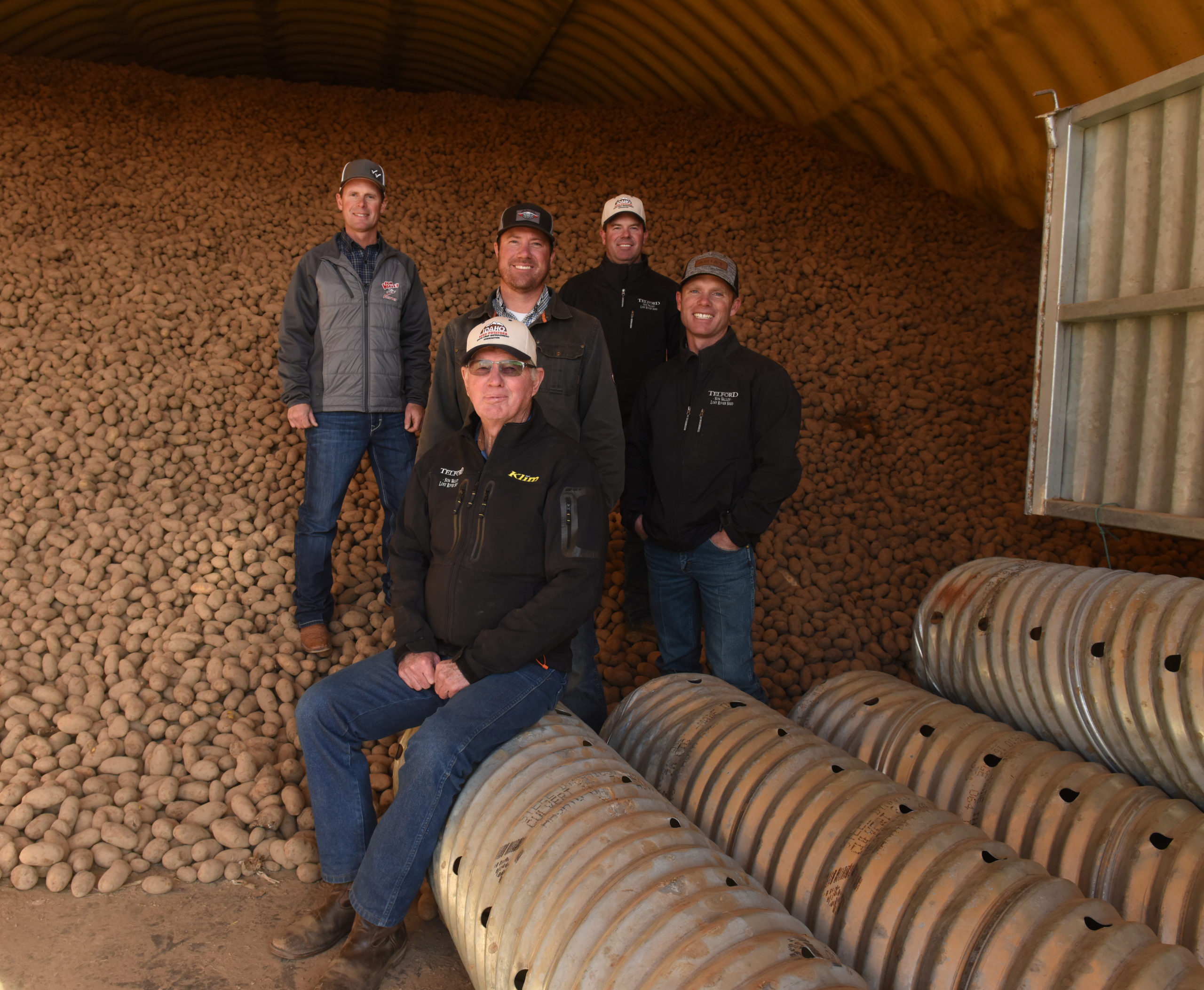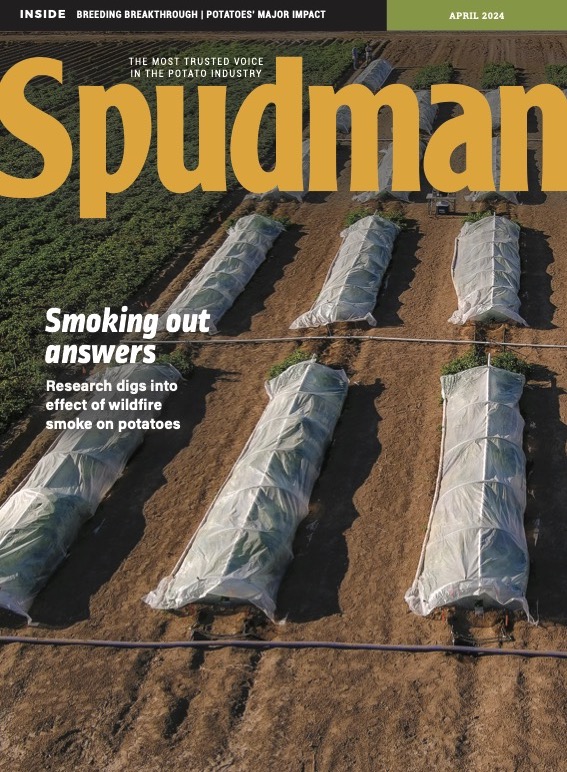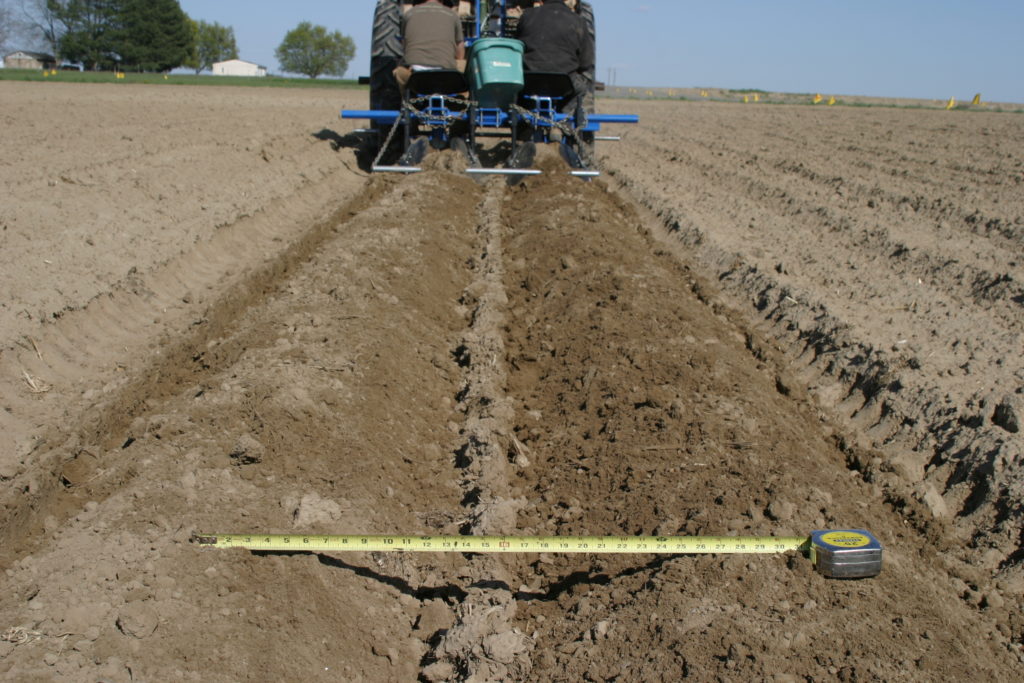
Reduced row width for increased yield
Potatoes have been grown in a specific way for decades, with traditional spacing between them, but research has proved that they can be grown closer together without affecting tuber size and can potentially increase yield.
Mark Pavek, professor and potato specialist at Washington State University, likes to question farming practices that aren’t particularly marked by research, and then research them himself to see if these practices are the most efficient.
“If you look back, row width was probably more of a convenience of machinery,” said Pavek, “and being able to use equipment that’s already designed.”
The usual, traditional row width is around 34 to 36 inches in the Northwest U.S., but newer machines are available to growers that want to make changes as their current equipment goes into decline.
The adoption of narrower widths hasn’t caught on as quickly as some researchers hoped it would, but significant changes in farming practices are typically expected to take time before widespread adoption — there’s risk involved in big changes.
“Some people wait to see what their neighbors do. If the neighbor has good luck with it, then maybe they’ll adopt it. If there are positive results, adoption will feed off of that,” said Pavek.
Though this is a process measured in years, there have been some recent changes for growers in the Columbia Basin. More growers have made the move from 34-inch rows to 32-inch rows. Pavek said these growers stand to make more money over time, despite increased seed costs to plant into tighter rows.
“It’ll pay for all that,” Pavek said.
The research that has been done up to this point has found that the best row width for the Columbia Basin area is somewhere around 30 to 32 inches for russet-type potatoes, and anything smaller begins to cut into potato size and yield. The focus of these studies was about balancing plant population and row width to get the best growing situations.
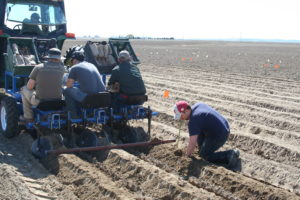
The initial research was conducted from 2013-2018, but it’s still ongoing. The next phase of this research, slated to begin this year, will focus on row width in combination with irrigation and how changes in plant population affect water use.
“We want to figure out more about the moisture part of it, because as plant populations get really condensed, you start to have problems keeping the soil moist,” said Pavek. “We’re going to apply more irrigation than we did with the first round and see if we boost the yields of the narrowest rows.”
One of Pavek’s former students, Rhett Spear, is now conducting row width research in Idaho. Rhett is an assistant professor studying potato agronomy and new varieties at the University of Idaho in Aberdeen. Pavek’s research is particular to the Columbia Basin and may not carry over to other potato-growing regions that are either not well-irrigated or simply rain fed. Because of this, growers are advised to exercise caution, because in areas that are short on water, it may not be possible to add too many more plants per acre.
This process will take time as well, just as with different potato varieties that gain popularity. Pavek likens it to Clearwater Russet, a variety introduced in 2007 that is now, 15 years later, starting to show notable growth in the marketplace. As such, Clearwater Russet and other varieties are also being investigated in the study to see if they show any measurable differences in regard to row width and water use.
“We will be able to model the water use of these varieties when grown under different densities. So, if water becomes short in a particular region, perhaps we can change our plant populations to match the water availability,” Pavek said.
The idea is to see how, with different plant populations, growers can still get a good base size profile for marketability, even if yields might be down due to restricted water availability.
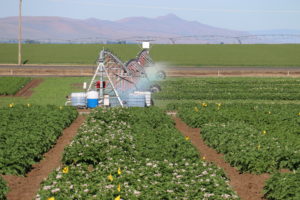
The study will highlight varieties that handle all kinds of conditions — stable varieties that can withstand weather extremes.
“We’re trying to make lemonade out of lemons, basically with the water situation,” Pavek said.
The reduced row width during the last study had no discernable downside regarding disease or pest infestation. The research looked for disease, and based on yields and postharvest analysis, the research team didn’t find anything concerning.
Fertilization didn’t change from the industry standard during the past study, only the row spacing changed. All row width treatments received the same industry standard fertilizer application rate. The narrower rows still had an increased yield.
All of these elements — row width, variety and water use — are important to the sustainability of the crop, and Pavek’s team will model the water use for these three factors in an effort to better guide future cultural management decisions.
Regarding the big picture, Pavek added, “The best way we can do sustainability research is by identifying new varieties that yield better, handle disease better, have more resistance, are more fertilizer efficient and more water efficient. I think that’s where we see the biggest improvement — through new varieties. However, once we identify better varieties, then we must determine how best to grow them.”
Planting 30-in. rows at the Washington State University farm. Photos: Washington State University




